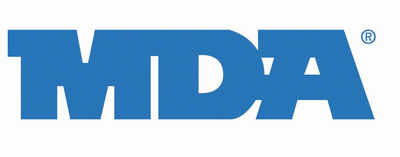Battle of Midway, 4-7 June 1942
Posted: Monday, June 04, 2012 by Travis Cody inFrom 4 June through 7 June 1942, the battle for Midway Atoll devastated the Japanese fleet and proved that the reach of American air power on board aircraft carriers was the way to begin the long process of dislodging the Japanese from the Pacific. If the Japanese campaign to invade Midway had succeeded, they would have been able to threaten US holdings in the Pacific right up to the west coast.
If you are so inclined, you may read my previous posts on the subject.
- 7 June 2009 about several American heroes of the battle
- 7 June 2010 about USS Hornet, USS Yorktown, and USS Enterprise
- 2 June 2011 about Midway's land based air defense
Battles are won by the men who fight them. Battles are also won by the decisions to send men to fight them. Today I'd like to tell you about two significant commanders who directed the men who fought and won the battle for Midway. You'll likely know one name very well, but the other may not be as familiar.
Admiral Chester Nimitz (1885-1966) was appointed Commander in Chief, US Pacific Fleet just days after the Japanese attack on Pearl Harbor in December 1941. In March 1942, he was appointed Commander in Chief, Pacific Ocean Areas. He was charged with opposing Japanese expansion into the western Pacific, as much as possible with a dangerously depleted American surface fleet. He had to be cautious with the precious tonnage left to him, but he couldn't be timid.
As USS Enterprise and USS Hornet were taking Lt Col Jimmy Doolittle (1896-1993) and his B-25s to Tokyo in the first American offensive strike of war in the Pacific, USS Yorktown and USS Lexington found themselves engaged in the first pitched sea battle between the Japanese and American navies in the Coral Sea. Lexington was sunk and Yorktown was badly damaged, managing to make her way back to Pearl Harbor.
Although the Japanese scored a tactical victory, strategically the US and her Australian allies were victorious in repelling an invasion and keeping Port Moresby in New Guinea free of enemy control. The battle also damaged two enemy fleet carriers, preventing them from joining the battle for Midway.
Admiral Nimitz's successful early command in the Pacific was predicated on his ability to understand the broad tactical and strategic scope of battles fought far from his immediate control, and his ability to navigate murky political waters. When Commander Joseph Rochefort's (1900-1976) team developed intelligence pointing to Midway Atoll as the next major Japanese target for invasion, Admiral Nimitz had to make a bold decision and justify it in the face of opposition from Washington.
But the intelligence team proved it's hypothesis and Admiral Nimitz made the decision to send Enterprise and Hornet to Midway with their screening vessels of cruisers and destroyers. He sent as much defensive material as he could to the Atoll to give the Marines there a fighting chance. He put pressure on the ship yard at Pearl Harbor to get Yorktown sea worthy in less than three days so she could join the coming battle.
Then he made another decision. To replace an ill Admiral William Halsey (1882-1959), Admiral Nimitz appointed Admiral Ray Spruance to take the surface elements of the naval defense to Midway.
Admiral Ray Spruance (1886-1969) was a graduate of the US Naval Academy at Annapolis in 1906 and a trained electrical engineer. As US involvement in WWII began in the Pacific, he commanded Cruiser Division Five, consisting of four heavy cruisers and support ships assigned to Admiral Halsey's task force.
When Admiral Halsey came down with shingles and was forced into the hospital, Admiral Nimitz asked him to recommend a replacement commander for the task force. Without hesitation, Admiral Halsey nominated Admiral Spruance. Although junior to many candidates and with no carrier duty in his career, Admiral Halsey believed him to be the right man for the job.
In the movie Midway, Admiral Halsey is played by Robert Mitchum and is quoted as saying to Admiral Spruance, played by Glen Ford, "Any Skipper who could keep his cruisers and destroyers alongside of my carriers, from one end of the Pacific to the other, is definitely the man for the job." That may or may not have been said in reality, but Admiral Halsey was confident in his choice.
Although Admiral Frank Jack Fletcher (1885-1973) would assume overall command once his Yorktown arrived on station, it was Admiral Spruance who suggested that the US fleet should be positioned to the northwest of Midway Atoll. This gave him the flexibility to move to defend the American west coast or Hawaii if Midway was just a diversion, as so many in Washington believed.
Admiral Spruance relied on advice from his air operations officer to set up an air search to try and locate the Japanese force. Once found, he was in turn audacious, flexible, and cautious in launching waves of torpedo planes and dive bombers. Admiral Spruance was calm and decisive in the face of the uncertainty and rapidly changing circumstances of such a large naval engagement.
The admiral has been criticized for allowing the remainder of the Japanese fleet to escape east after the four carriers had been destroyed. In my opinion, withdrawal was the best option. The victory at Midway was huge and turned the tide of power in the pacific. However, the American navy was still dangerously depleted, particularly with the loss of Yorktown. Plus, there was still a powerful surface fleet somewhere to the east, commanded by Admiral Isoroku Yamamoto (1884-1943), not to mention the submarines that might sneak up on the task force in the dark.
Enterprise and Hornet, joined by USS Saratoga, would be the only operational carriers left in the Pacific until the Essex class carriers began to arrive late in 1942. So after audacity led to a tremendous victory at Midway, the more prudent decision took hold not to pursue the retreating Japanese. Regrouped and refitted with new aircraft, these three gals prepared to take the offensive in the Southwest Pacific Theater of Operations.
The battle at Midway Atoll was won by the men who fought. But the seeds for that victory, and subsequent success in the Pacific, were sewn in large part by the decisions of Admiral Nimitz and Admiral Spruance.




















Interesting post Trav.